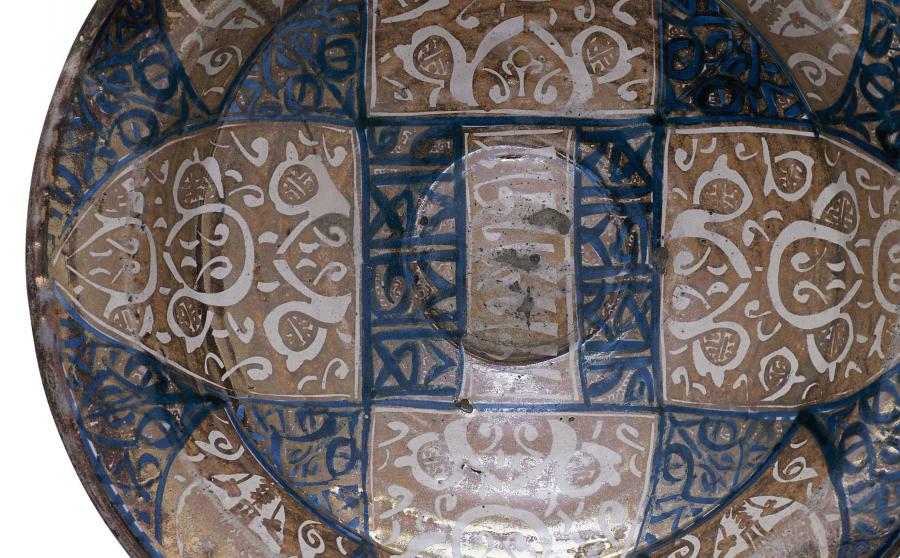Dish with Arabic inscriptions
Information sur l’artiste
Valencia (?), Spain

Plat à inscription arabe, fin du XIVe - début du XVe siècle.
Image © Lyon MBA - Photo Alain Basset
This large dish is a luxury item produced by the Muslim potters remained in Spain despite the Catholic Reconquista that recaptured the Valencia territory from the 13th century.
At the request of the artworks’ commissioner, heraldic motifs and Christian inscriptions could also be incorporated into the purely Islamic decorative style.
This piece is decorated with a cross-shaped motif on a background of floral designs in cobalt blue, with stylised depictions of the tree of life inserted around its edges. A central band with the imitation of an Arabic golden inscription is framed by two rows containing the same repeated phrase in simplified script: al-afya, which means “good health”.
The enamelled decoration was applied during successive firings, beginning with the blue motifs on a cream background. The gold colour, using a metallic glaze, is typical of this "Hispano-Moorish" earthenware. This luxury piece of tableware was very sought-after at the end of the Middle Ages, before being supplanted by 'maiolica' from Italy. Entire dinner services were indeed exported from the port of Valencia to adorn the tables of European and Mediterranean nobility.
Valencia (?), Spain
Late 14th – early 15th century
Ceramics, painted decoration using cobalt, copper, and silver oxides on a tin glaze
Dia. 36; H. 8 cm
Bequeathed by Marquess Arconati-Visconti in 1916
Inv. E 538-32





